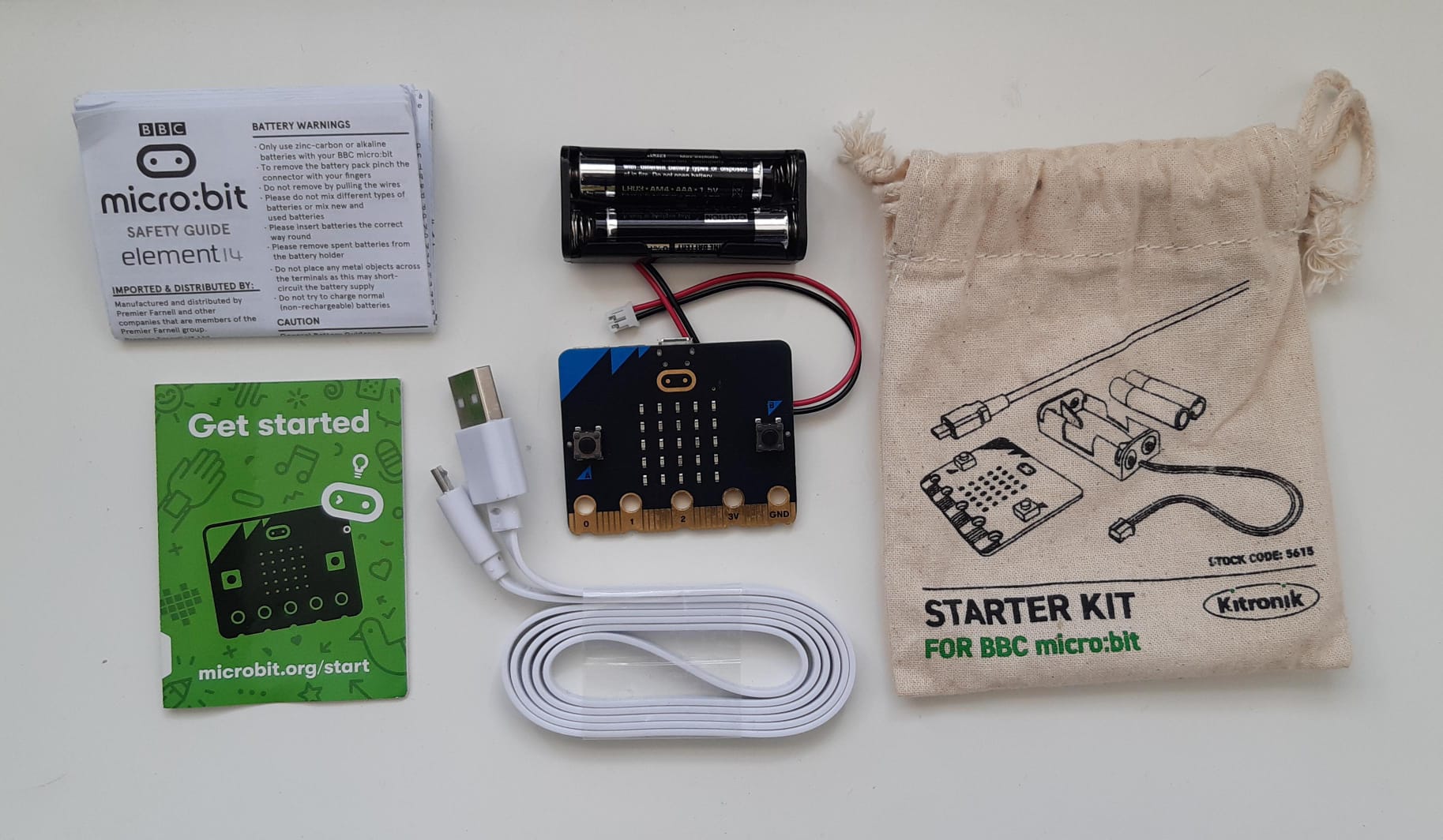Micro:bit - Don't Drop The Ball
11 Aug 2023A little game I made using a Micro:bit 🕹️👾
Recently, I have become fascinated with the BBC micro:bit. It has been described as a "pocket-sized computer" and is much like a beginner-friendly Raspberry Pi or Arduino. Micro:bit is designed by the BBC to educate people on how computers work and to inspire children to engage in digital creation.
The Micro:bit Educational Foundation is a not-for-profit organisation that aims to inspire every child to create their best digital future. - Micro:bit
Given my recent interest in this electronic, I was pleasantly surprised to find that my sister-in-law's boyfriend had a Micro:bit ✨, which he ordered during COVID lockdown, for me to borrow and play around with 🕹️. With that, I thought I would try and make a little game 👾.

What did I use?
The Micro:bit can be programmed using (1) Microsoft's MakeCode editor, which allows programming using colourful blocks like in Scratch, or (2) their own Python editor, which is also known as MicroPython.
Since I am already familiar with text-based programming and Python, I opted for MicroPython. The editor is user-friendly, accompanied by easily accessible documentation and drag-and-drop code snippets. I especially like how there is a simulator of the Micro:bit on the side which quickens the development process.
What game did I make?
I decided to create a game that makes use of the accelerometers in the Micro:bit. The goal of the game is to keep the "ball" on the board and prevent it from falling off. As the player tilts the board, the ball rolls across the board. To add difficulty, the ball speeds up as you level-up.
My source code
Below is a copy of the source code.
## Imports go at the top
from microbit import *
import time
DIRECTION = 'direction'
MAGNITUDE = 'magnitude'
DOWN = 'DOWN'
RIGHT = 'RIGHT'
LEFT = 'LEFT'
UP = 'UP'
GRAVITY_MODE = {
DOWN: {DIRECTION: 'y', MAGNITUDE: 1},
RIGHT: {DIRECTION: 'x', MAGNITUDE: 1},
UP: {DIRECTION: 'y', MAGNITUDE: -1},
LEFT: {DIRECTION: 'x', MAGNITUDE: -1},
}
ANTICLOCKWISE_GRAVITY_CHANGE = {
DOWN : RIGHT,
RIGHT : UP,
UP : LEFT,
LEFT : DOWN
}
CLOCKWISE_GRAVITY_CHANGE = {
DOWN : LEFT,
RIGHT : DOWN,
UP : RIGHT,
LEFT : UP
}
LEVELS_TO_MS = {
1: 1000, ## millisecs per frame for each level
2: 500,
3: 250,
4: 200,
5: 150
}
MAX_LEVEL = 5
## States
WON = 'WON'
PLAY = 'PLAY'
IDLE = 'IDLE'
FILLED_VALUE = 9;
MAX_VALID_VALUE = 4
MIN_VALID_VALUE = 0
TILT_THRESHOLD = 500
COUNT_PER_LEVEL = 15
def isPointValid(pt):
x = pt['x']
y = pt['y']
return (
x <= MAX_VALID_VALUE and x >= MIN_VALID_VALUE and
y <= MAX_VALID_VALUE and y >= MIN_VALID_VALUE
)
def loopDisplay(a):
for i in a:
display.show(i)
time.sleep(1)
def countDown(level):
loopDisplay([Image.HAPPY, "LEVEL "+str(level)])
## Intitalise
point = {'x': 2, 'y': 0} ## coordinate of the ball
gravity_key = 'DOWN'
counter = 0 ## to see how much "time" has passed for leveling up!
level = 1 ## initial level
state = PLAY
countDown(level)
while True:
if isPointValid(point) and state == PLAY:
display.clear()
display.set_pixel(point['x'],point['y'],FILLED_VALUE)
time.sleep_ms(LEVELS_TO_MS[level])
if counter == COUNT_PER_LEVEL:
if level < MAX_LEVEL:
level = level + 1
point = {'x': 2, 'y': 0}
gravity_key = 'DOWN'
counter = 0
countDown(level)
else:
state = WON
## Tilt to control ball
x_strength = accelerometer.get_x()
y_strength = accelerometer.get_y()
if abs(x_strength) >= abs(y_strength):
if x_strength >= TILT_THRESHOLD:
gravity_key = RIGHT
if x_strength <= -TILT_THRESHOLD:
gravity_key = LEFT
else:
if y_strength >= TILT_THRESHOLD:
gravity_key = DOWN
if y_strength <= -TILT_THRESHOLD:
gravity_key = UP
## Press buttons to control ball
if button_b.was_pressed():
gravity_key = ANTICLOCKWISE_GRAVITY_CHANGE[gravity_key]
if button_a.was_pressed():
gravity_key = CLOCKWISE_GRAVITY_CHANGE[gravity_key]
## Update gravity
gravity = GRAVITY_MODE[gravity_key]
point[gravity[DIRECTION]] = point[gravity[DIRECTION]] + gravity[MAGNITUDE]
## Increment counter
counter = counter + 1
else:
## When the player has lost
loopDisplay([Image.SAD])
state == IDLE
## When the player has won
if state == WON:
loopDisplay([Image.HAPPY, 'YOU WON!'])
state = IDLE
## Waiting for the player to be ready to restart game
if state == IDLE or button_b.was_pressed() or button_a.was_pressed():
point = {'x': 2, 'y': 0}
gravity_key = 'DOWN'
counter = 0
level = 1
state = PLAYThe Result
Creating and playing the game was incredibly enjoyable :D
Overall, I'm quite impressed with what you can do with Micro:bit! I would recommend it to people who want to learn how to code and create something fun!